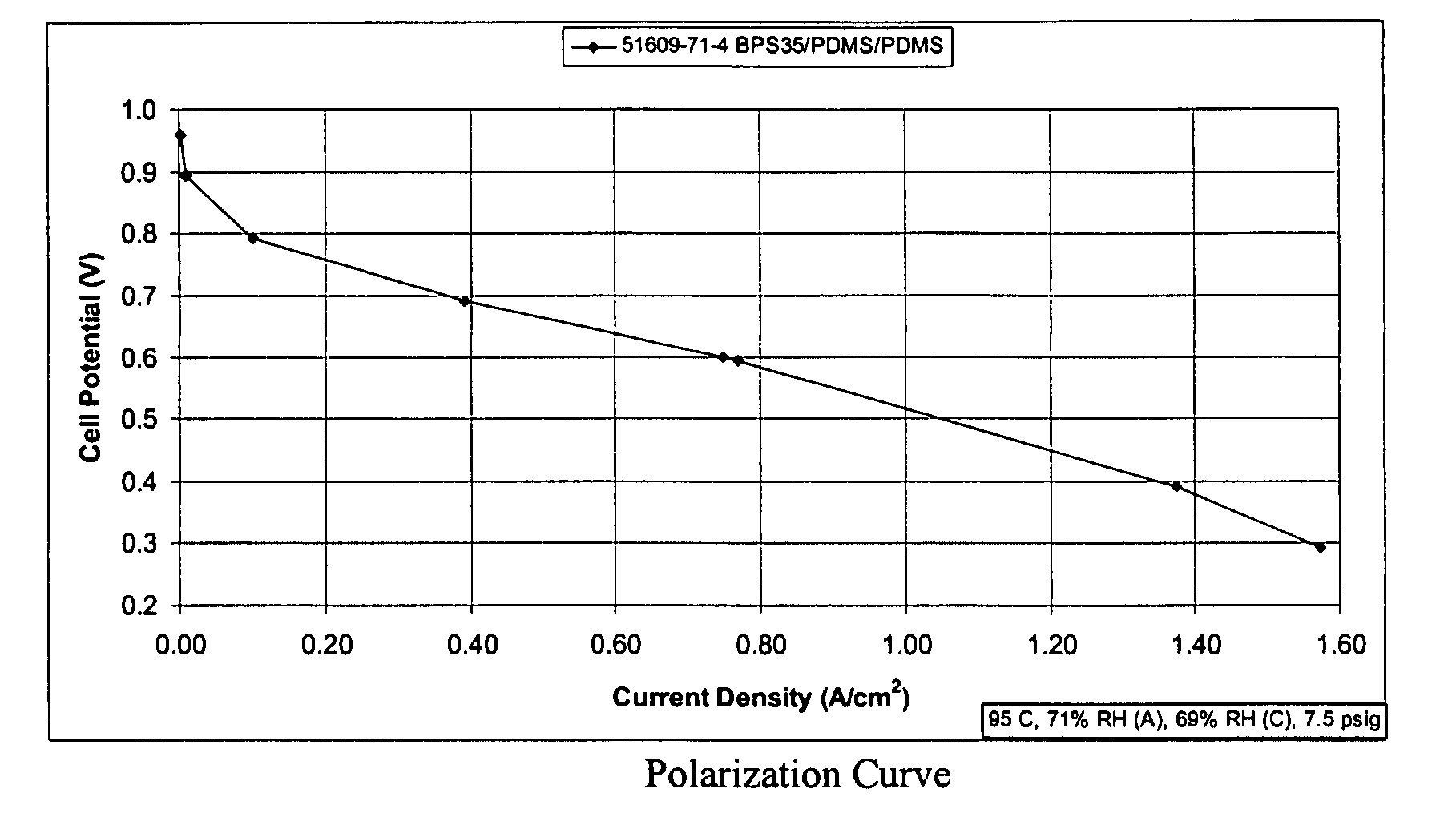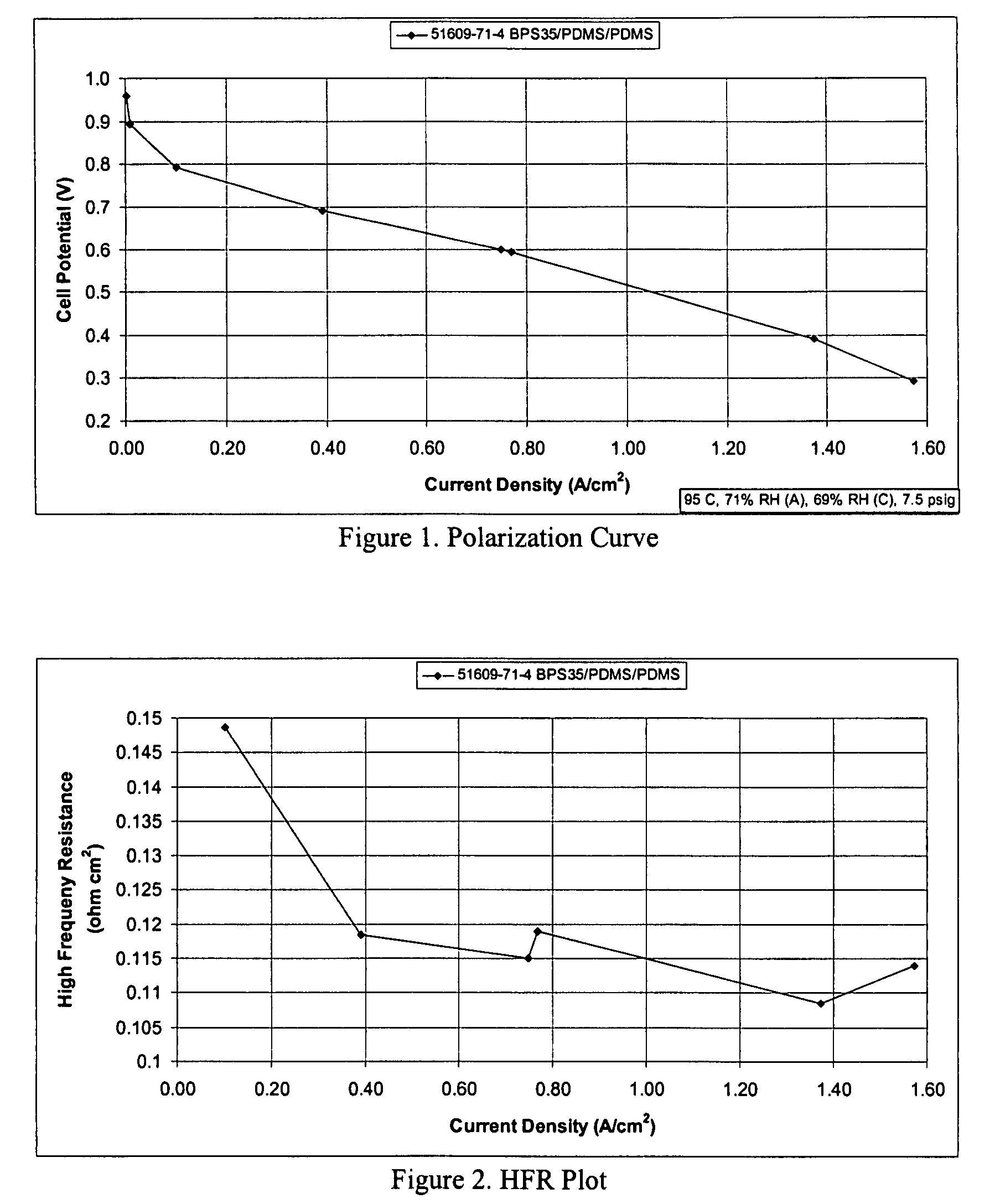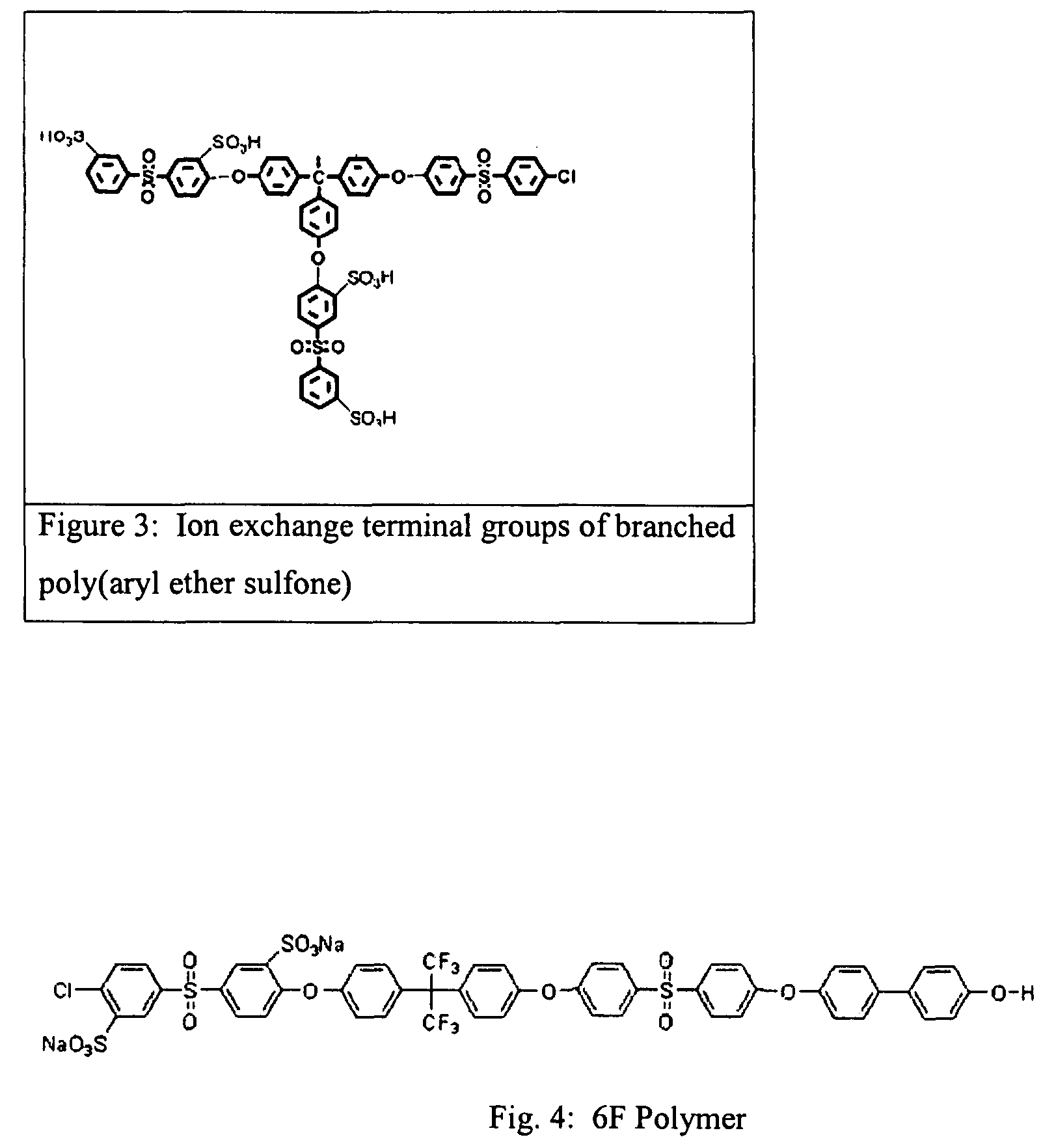Ionically conductive polymers for use in fuel cells
a technology of ionically conductive polymers and fuel cells, applied in the field of polymers, can solve the problems of consumption of cell power, and achieve the effect of enhancing the acidity of the polymer
- Summary
- Abstract
- Description
- Claims
- Application Information
AI Technical Summary
Benefits of technology
Problems solved by technology
Method used
Image
Examples
example 1a
[0029]The polymer shown in scheme 1 was obtained as follows. In a 250 mL three neck round bottom flask, fitted with a stir rod, thermocouple, Dean Stark condenser and inlet for gas purging, charged 10.2 grams of Sulfonated poly(aryl ether sulfone) with degree of sulfonation=50%, K2CO3 (3.1 gram) 75 mL N,N-dimethylacetamide and 35 mL toluene. The reagents were heated slowly until the reflux temperature reached (˜133° C.) and maintain the reflux for 4 hours. Toluene was gradually removed and increased the temperature to 160° C. and removed the remaining toluene. The flask was cooled to 60° C. and added 10.1 of diglycidylether terminated poly(dimethyl siloxane) with number average molecular weight 5000 over a period of one hour. The flask was slowly heated to 120° C. and reaction was maintained for 12 h at that temperature. At the end of 12 h, the reaction mixture was cooled down to room temperature. The product obtained was isolated by precipitating in water and drying in a vacuum ove...
example 1b
[0030]In a 500 mL three neck round bottom flask, fitted with a stir rod, thermocouple, Dean Stark condenser and inlet for gas purging, charged 22.3 gram of Sulfonated poly(aryl ether sulfone) with degree of sulfonation=50%, 250 mL N,N -dimethylacetamide and 70 mL toluene. The reagents were heated slowly until the reflux temperature reached (˜133° C.) and maintain the reflux for 4 hours. Toluene was gradually removed and increased the temperature to 160° C. and removed the remaining toluene. The flask was cooled to 20° C. and added 7 mL n-butyl lithium followed by 8.9 g of chlorine terminated poly(dimethyl siloxane) with number average molecular weight 3000 a period of 20 to 30 minutes. The reactants were allowed to stir at room temperature for 16 hours and the product obtained was isolated by precipitating in isopropanol followed drying in a vacuum oven at 120° C. for 24 h.
example 1c
[0031]In a 250 mL three neck round bottom flask, fitted with a stir rod, thermocouple, Dean Stark condenser and inlet for gas purging, charged thoroughly dried 25.1 gram of Sulfonated poly(aryl ether sulfone) with degree of sulfonation=35%, 150 mL N,N-dimethylacetamide. The reagents were heated slowly up to 125 deg C. and stirred until all the polymer is completely dissolved in the solvent. The flask was cooled to 20° C. and added 9 mL n-butyl lithium followed by 8.3 g of chlorine terminated poly(dimethyl siloxane) with number average molecular weight 3000 over a period of 20 to 30 minutes. The reactants were allowed to stir at room temperature for 16 hours and the product obtained was isolated by precipitating in isopropanol followed drying in a vacuum oven at 120° C. for 24 h.
PUM
| Property | Measurement | Unit |
|---|---|---|
| temperature | aaaaa | aaaaa |
| ionic conductivity | aaaaa | aaaaa |
| crystallinity index | aaaaa | aaaaa |
Abstract
Description
Claims
Application Information
 Login to View More
Login to View More - R&D
- Intellectual Property
- Life Sciences
- Materials
- Tech Scout
- Unparalleled Data Quality
- Higher Quality Content
- 60% Fewer Hallucinations
Browse by: Latest US Patents, China's latest patents, Technical Efficacy Thesaurus, Application Domain, Technology Topic, Popular Technical Reports.
© 2025 PatSnap. All rights reserved.Legal|Privacy policy|Modern Slavery Act Transparency Statement|Sitemap|About US| Contact US: help@patsnap.com



